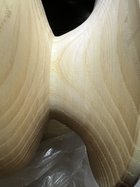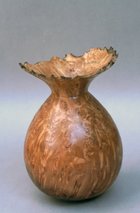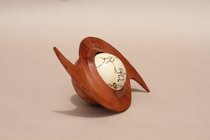I'm doing the hollow form in the attached pictures. Since I started turning about years ago, I've always been unable to do sharp inside curves like in the picture; between the top of the base and the top of the hollow form. I'm trying to make a more gradual curve rather than the more defined "line" I ended up with. I do want the curve to sort of be like what did, but a little more gradual (not a very good explanation).
I used 3 different size bowl gouges, the smallest a 1/4" to get the result I now have.
What is the best tool for this? Are there any videos online line that might provide some visual help on technique?
I used 3 different size bowl gouges, the smallest a 1/4" to get the result I now have.
What is the best tool for this? Are there any videos online line that might provide some visual help on technique?




